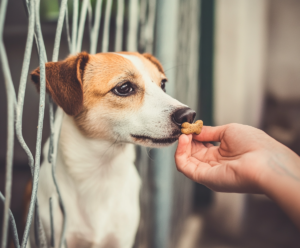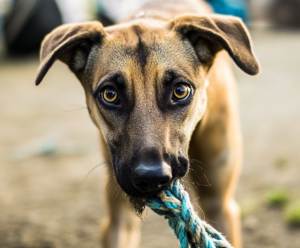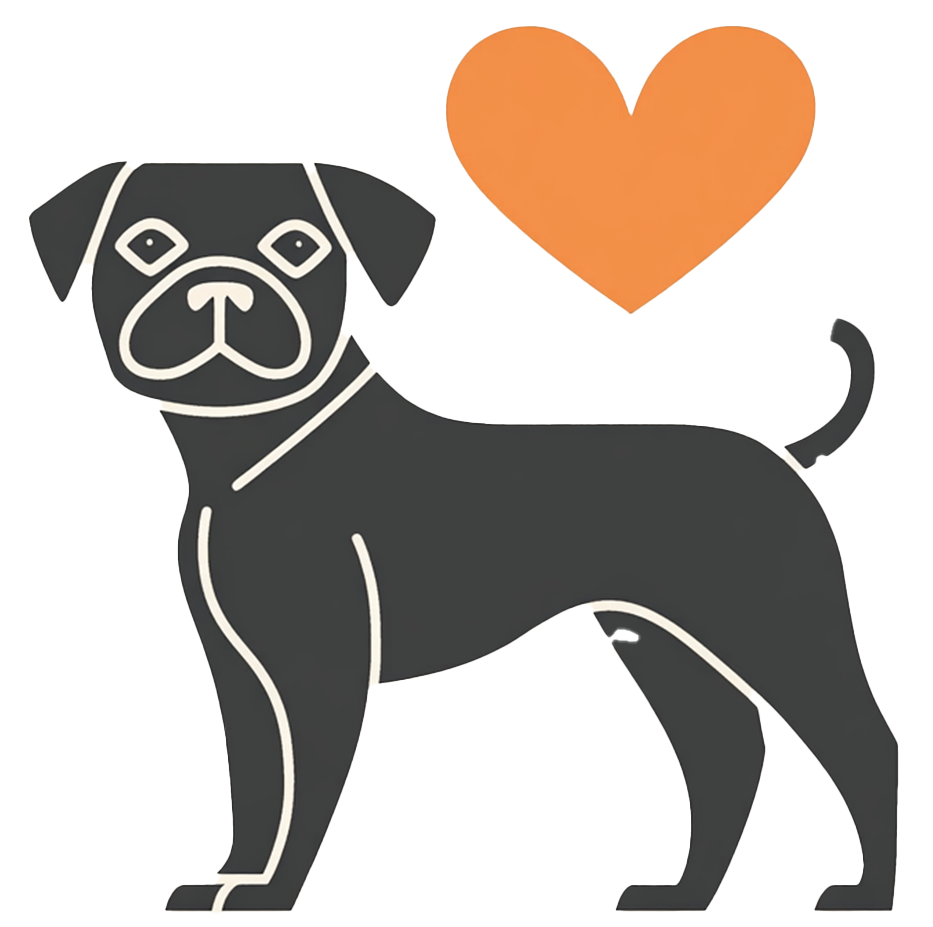
Rescue dogs often come with a history that includes trauma or fear, making it crucial to build trust before moving into serious training. Fortunately, using treats is a proven method for creating a bond and establishing trust through positive reinforcement. Let’s explore how treats, patience, and consistency can turn a scared rescue dog into a loving, trusting companion.
Why Building Trust is Essential for Rescue Dogs
Many rescue dogs arrive at their new homes with emotional baggage. Whether they’ve been abandoned, neglected, or had limited socialization, rescue dogs are more likely to experience anxiety and stress. Because of these past experiences, it’s important not to rush the training process.
Building trust is the first step in helping a rescue dog acclimate to their new life. A dog that trusts its owner is far more likely to respond positively to training and form a healthy bond. Rescue dogs can be more skittish, and sudden movements or loud commands might frighten them, undoing progress. That’s why patience, consistency, and respect for the dog’s boundaries are key.
When I first adopted Bruno, an aggressive rescue Boxer, it became clear early on that trust was the missing ingredient. He had been through multiple homes and was unsure of people, often reacting with aggression when he felt scared. Instead of using punishment, I started with treats as a way to ease his anxieties and reward calm behavior. By starting small and being patient, we built a foundation of trust that eventually led to his complete transformation.
As advised by the Humane Society, understanding your dog’s body language and respecting their comfort zone is crucial for building that trust. Reward them for calm behaviors and allow them to progress at their own pace. Pushing a dog too hard or expecting them to perform advanced commands before they’re ready can backfire.
The Role of Treats in Building Trust
Treat-based training is one of the most effective tools for building trust with rescue dogs. Most dogs are food-motivated, and using treats to reinforce positive behavior can make training an enjoyable experience for both you and your dog. But it’s not just about feeding them any treat; you need to use high-value treats—something that they love and are willing to work for.
It’s important to note that treats should never be used as bribes. The goal is to reward the dog for behaviors you want to encourage, not to bribe them into doing something. Using treats strategically, you can help your dog associate positive experiences with training sessions and interactions with you, fostering trust over time.
With my rescue Bulldog, Brian, I learned that some dogs need a little extra help to calm down and focus on training. Brian came from an RSPCA shelter and was nervous in new environments. I found that starting with calming treats like the Forthglade Calming Dog Treats helped reduce his anxiety enough for him to engage in training. These treats, made with natural calming ingredients like chamomile and lemon balm, were a game changer. They helped Brian feel more at ease, which made him more open to the training process.
Step-by-Step Guide: Training a Rescue Dog with Treats

1. Start Small
The key to training a rescue dog is to begin with simple, non-threatening exercises. For instance, start by rewarding your dog when they make eye contact with you or respond to their name. These are small but significant steps in building a relationship of trust. Each time your dog performs a simple behavior, reward them with a treat and verbal praise like “good job” or “well done.”
When I first started working with Bruno, he was extremely reactive. So instead of expecting him to follow complex commands right away, I focused on rewarding calm behaviors like sitting quietly or making eye contact. Over time, he began to relax and understand that good behavior earned him rewards. This approach helped us both feel more confident in his progress.
2. Use Calming Treats for Anxious Dogs
If your dog is too anxious or nervous to participate in training, try using calming treats before starting the session. This can help lower their stress levels and make them more receptive to learning. Treats with natural calming ingredients, like chamomile or valerian root, are particularly effective for rescue dogs who may feel overwhelmed in their new environment.
When I worked with Brian, I found that offering him a calming treat 15 minutes before our sessions allowed him to focus better and feel more at ease. Instead of feeling jittery and fearful, he became more open to the training process, and his progress was much faster as a result.
3. Gradually Increase Expectations
As your dog becomes more comfortable and starts to trust you, you can begin to increase the complexity of the commands. Start introducing basic commands like “sit,” “stay,” and “come,” rewarding your dog each time they comply. Remember to celebrate small victories! Even if your dog only partially follows a command, reward them for trying, and keep building on that progress.
For example, when Bruno first started responding to the “sit” command, I rewarded him heavily even if he didn’t get it perfectly. Over time, his confidence grew, and he became more consistent with the command. Positive reinforcement helped him feel successful, which in turn encouraged him to try harder in future sessions.
Addressing Common Challenges with Rescue Dogs
 Training a rescue dog often comes with its own set of challenges, from fear-based aggression to separation anxiety and extreme shyness. These behaviors are typically the result of a difficult or traumatic past, making it crucial to approach training with patience and consistency.
Training a rescue dog often comes with its own set of challenges, from fear-based aggression to separation anxiety and extreme shyness. These behaviors are typically the result of a difficult or traumatic past, making it crucial to approach training with patience and consistency.
One of the most effective strategies to help rescue dogs overcome anxiety during training is the use of calming treats. These treats can reduce stress, allowing your dog to focus better on the training process. For instance, the Itch Pet Calming Dog Treats are an excellent choice. Vet-approved and delivered straight to your door, these treats are made with calming ingredients like chamomile and lavender, which naturally help dogs relax. This can be especially useful when dealing with dogs that exhibit nervous behaviors or struggle with new environments.
When I started training Brian, my rescue Bulldog, he was extremely anxious and would become restless every time I left the house. By incorporating calming treats like the ones from Itch Pet into our routine, I noticed a significant improvement in his focus and ability to remain calm during training. Over time, these treats became a valuable tool in helping Brian overcome his separation anxiety.
As the AKC’s Guide for Shelter Dogs recommends, consistency is key when working with rescue dogs. Even when setbacks occur, maintaining a routine with positive reinforcement helps the dog associate good behavior with rewards, slowly building trust and boosting their confidence.
Expanding Training Beyond Basic Commands
Once your rescue dog becomes comfortable with basic commands like “sit” and “stay,” you can begin expanding their training to include more advanced commands. Commands like “leave it,” “come,” and recall exercises help build the dog’s mental stimulation and further strengthen the bond between you.
Advanced training exercises help your dog gain confidence and give them a sense of accomplishment, which is especially important for rescue dogs. For instance, when I began working on advanced commands with Bruno, it was clear that mastering tasks like “stay” and “leave it” boosted his confidence. Using high-value treats during these sessions helped reinforce the positive behaviors and made the training enjoyable for him.
If you’re looking for advice on how to introduce more complex commands into your dog’s routine, the AKC Advanced Dog Training Tips offer some great insights. These tips will help you structure your training sessions in a way that ensures steady progress and maintains the dog’s interest.
The Importance of Socialisation in Building Trust
Socialization is another key aspect of building trust with a rescue dog. Many rescue dogs have had limited or negative experiences with other dogs or people, which can lead to fear-based aggression or withdrawal. The process of socializing a rescue dog can be challenging, but it is crucial for helping them become well-adjusted in their new environment.
By rewarding calm and friendly behavior during interactions with other dogs or new people, you can help your dog associate these experiences with positive outcomes. Treats play a big role here, as they give the dog a tangible reward for good behavior, helping them feel more secure in these situations.
When I started socializing Brian, he was extremely shy and nervous around other dogs. We attended socialization classes, and I brought along his favorite calming treats. Each time he approached another dog or stayed calm in a new environment, I rewarded him with a treat. Over time, Brian began to associate these interactions with positive experiences, and his confidence in social situations grew significantly.
For more tips on how to effectively socialize your rescue dog, the Animal Humane Society’s Guide to Socialization offers excellent advice on how to create positive social experiences for your dog using rewards and patience.
Gradually Phasing Out Treats

As your rescue dog progresses in their training and becomes more comfortable, you’ll want to gradually phase out the use of treats. The goal is to have your dog respond to commands and demonstrate good behavior based on the trust and bond you’ve built, rather than relying on treats as motivation.
At this stage, you can start replacing treats with other forms of positive reinforcement, such as verbal praise, affection, or playtime. While treats are an excellent starting point for building trust, they should eventually be just one part of your dog’s overall reward system.
In my experience with both Bruno and Brian, I slowly reduced the frequency of treats once they became consistent in their behavior. Instead, I relied more on verbal praise, belly rubs, and playtime as rewards. Both dogs adjusted well to this change, proving that the trust we had built was stronger than their dependence on treats.
Conclusion
Training a rescue dog with treats is an incredibly effective way to build trust and create a positive bond. By starting with small, manageable tasks, addressing behavioral challenges with patience, and gradually introducing more advanced commands, you’ll see your dog’s confidence and trust in you grow.
Socialization is also a key component of trust-building, and rewarding your dog for positive interactions with other dogs or people will further enhance their adjustment to their new environment. As training progresses, you can start phasing out treats in favor of other forms of reward, strengthening the bond you’ve worked hard to build.
If you’ve had success using treats to train your rescue dog or if you’re currently working through any challenges, feel free to share your experiences in the comments below. I’d love to hear how your furry friend is progressing!





